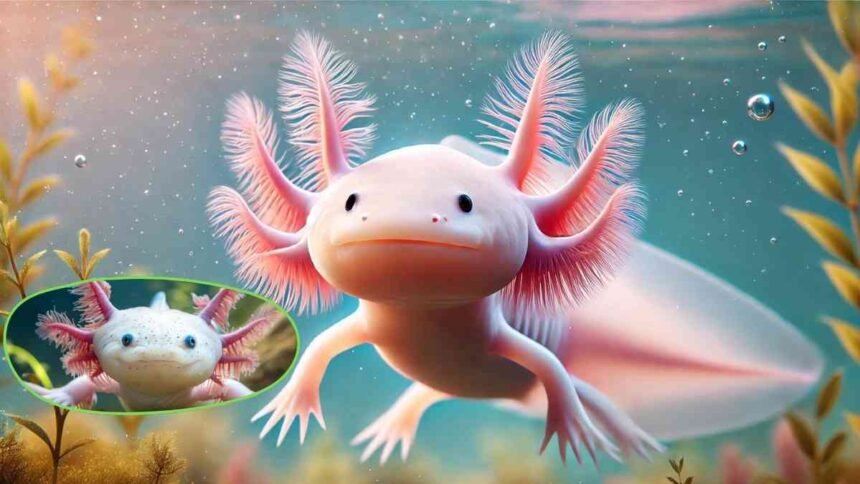Axolotl pictures are a visual treat, capturing the vibrant and fascinating features of this rare aquatic amphibian. Known for its wide smile, external gills, and ability to regenerate limbs, the axolotl is a marvel of nature. These captivating images not only showcase its endearing looks but also provide insight into its unique habitat and behaviors. Whether you’re a biology enthusiast or simply a fan of nature’s wonders, axolotl pictures bring you closer to this extraordinary creature.
Introduction
Axolotls, often referred to as “Mexican walking fish,” are aquatic creatures native to the lakes of Mexico. Unlike most amphibians, they retain their larval features throughout their life, a condition known as neoteny. Their pinkish skin, feathery gills, and perpetual smile have made them internet-famous. High-quality axolotl pictures allow us to appreciate the unique charm and biological wonder of these creatures up close. In this article, we’ll explore the world of axolotls through stunning images while delving into their fascinating biology, habitat, and the growing trend of axolotl appreciation.
The Fascinating World of Axolotls
Axolotls belong to the Ambystomatidae family, and their most striking feature is their ability to regenerate lost body parts. This rare ability, coupled with their friendly appearance, makes them a subject of fascination for scientists and nature lovers alike. Unlike frogs, axolotls do not undergo a complete metamorphosis. Instead, they keep their aquatic larval stage throughout their lives. This unique trait is one of the reasons why axolotls have become a symbol of scientific curiosity.
The Unique Anatomy of Axolotls
One glance at an axolotl picture reveals the creature’s unmistakable features: wide-set eyes, a small mouth that appears to be smiling, and large, feathery gills protruding from both sides of their head. These gills are essential for breathing underwater. While axolotls can also gulp air at the surface, their gills are their primary breathing apparatus. Their long tails, used for swimming, and their small, underdeveloped legs contribute to their unique, endearing look.
Exploring Axolotl Habitats
Axolotls are native to Lake Xochimilco and Lake Chalco in Mexico, though their wild population has drastically declined due to habitat loss and pollution. These lakes provide the perfect environment for axolotls, with clean water and plenty of food. Capturing axolotls in their natural habitat is becoming rarer, making axolotl pictures an essential tool for raising awareness about their conservation. As their natural environment shrinks, more axolotls are now being raised in captivity, but their images still remind us of the need to preserve their wild habitat.
Capturing the Beauty of Axolotls in Pictures
Axolotl pictures have taken the internet by storm. With their bright colors and unique features, they are a photographer’s dream subject. High-definition images of axolotls show the intricate details of their gills, the smooth texture of their skin, and their expressive faces. Whether they are floating in water or playfully interacting with their environment, every shot of an axolotl is a testament to their photogenic nature.
The Role of Axolotl Pictures in Education and Awareness
Axolotl pictures play a crucial role in educating the public about these creatures. As their wild population continues to decline, visual content helps raise awareness about conservation efforts. These images are often used in educational materials, zoos, and social media to spark curiosity and foster a connection between people and wildlife. By simply viewing axolotl pictures, individuals can learn about their unique biology, their endangered status, and the steps needed to protect them.
Axolotls in Popular Culture
Axolotls have become cultural icons, especially in the digital world. Their distinct features have been immortalized in video games, memes, and animations. The playful appearance of axolotls makes them a favorite subject for artists and content creators. From children’s books to fan art, axolotls are celebrated for their unique look and charm. Axolotl pictures have also played a role in their rise in popularity, especially among exotic pet enthusiasts.
Tips for Photographing Axolotls
If you’re interested in capturing axolotl pictures, there are a few things to keep in mind:
- Lighting: Axolotls thrive in low-light environments, so avoid using harsh flash photography. Opt for soft, natural light to capture their true colors.
- Patience: Axolotls move slowly, making them easy subjects, but waiting for the perfect moment when they extend their gills or open their mouths can result in even better pictures.
- Background: A clean and simple background, like a clear tank, can help highlight the axolotl’s unique features without distractions.
- Angle: Take shots from multiple angles to capture different aspects of their anatomy, from their gills to their expressive eyes.
Conclusion: Celebrating the Charm of Axolotls Through Pictures
Axolotls are one of nature’s most photogenic creatures. Their charm, unique biology, and rarity make them fascinating subjects for both professional photographers and casual admirers. As more people discover the beauty of these creatures through pictures, the demand for axolotl photography continues to grow. Whether you’re interested in biology, conservation, or just appreciating the natural world, axolotl pictures offer a window into the life of a truly extraordinary amphibian.
For More Visit, Viraltimes.co.uk







